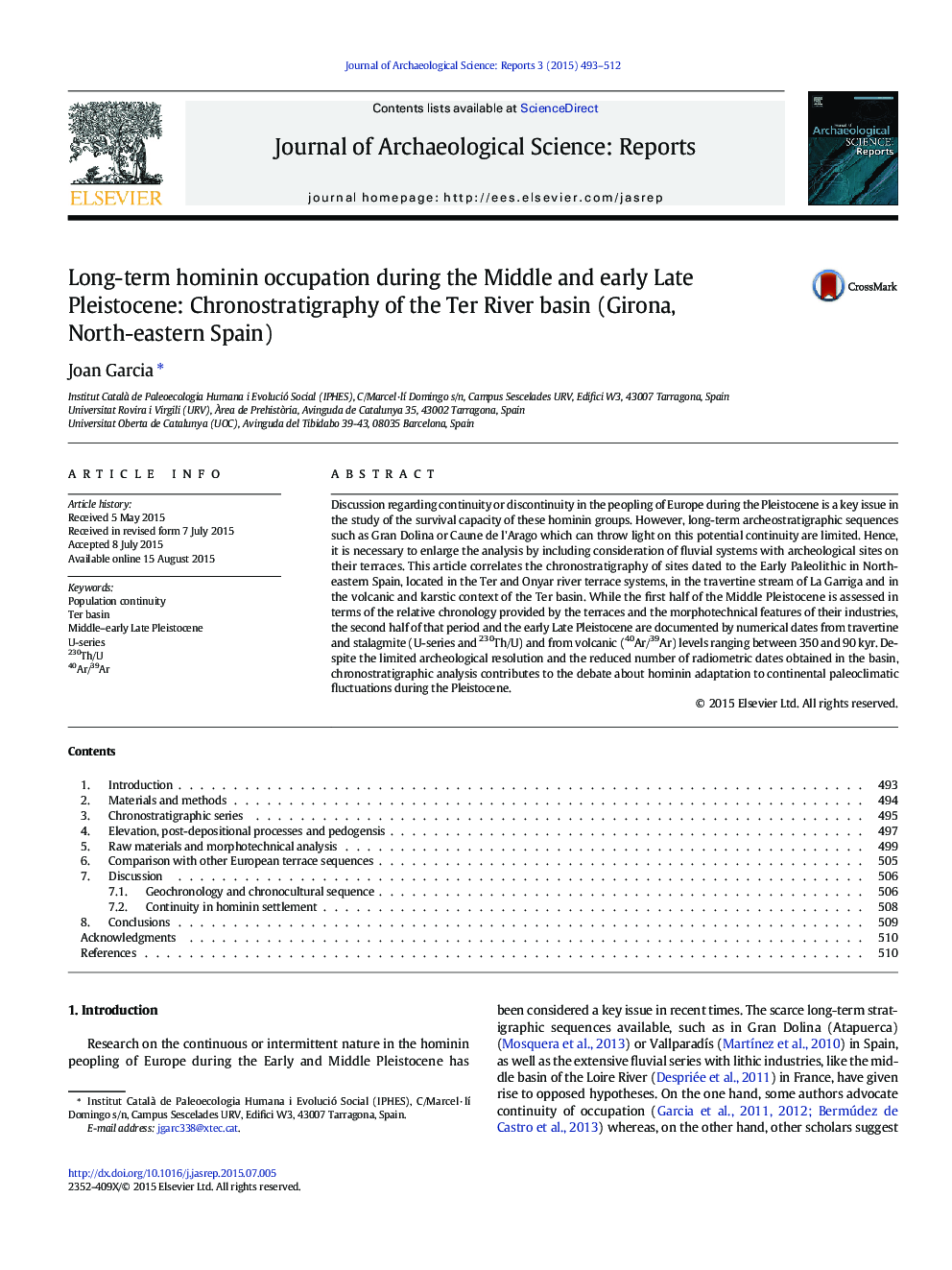| Article ID | Journal | Published Year | Pages | File Type |
|---|---|---|---|---|
| 7446600 | Journal of Archaeological Science: Reports | 2015 | 20 Pages |
Abstract
Discussion regarding continuity or discontinuity in the peopling of Europe during the Pleistocene is a key issue in the study of the survival capacity of these hominin groups. However, long-term archeostratigraphic sequences such as Gran Dolina or Caune de l'Arago which can throw light on this potential continuity are limited. Hence, it is necessary to enlarge the analysis by including consideration of fluvial systems with archeological sites on their terraces. This article correlates the chronostratigraphy of sites dated to the Early Paleolithic in North-eastern Spain, located in the Ter and Onyar river terrace systems, in the travertine stream of La Garriga and in the volcanic and karstic context of the Ter basin. While the first half of the Middle Pleistocene is assessed in terms of the relative chronology provided by the terraces and the morphotechnical features of their industries, the second half of that period and the early Late Pleistocene are documented by numerical dates from travertine and stalagmite (U-series and 230Th/U) and from volcanic (40Ar/39Ar) levels ranging between 350 and 90Â kyr. Despite the limited archeological resolution and the reduced number of radiometric dates obtained in the basin, chronostratigraphic analysis contributes to the debate about hominin adaptation to continental paleoclimatic fluctuations during the Pleistocene.
Related Topics
Social Sciences and Humanities
Arts and Humanities
History
Authors
Joan Garcia,
